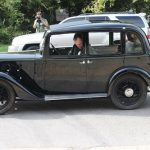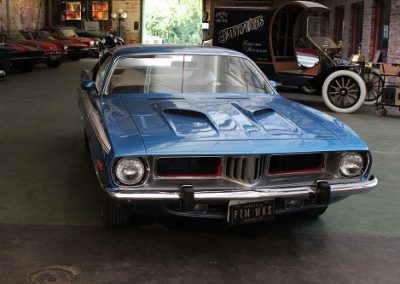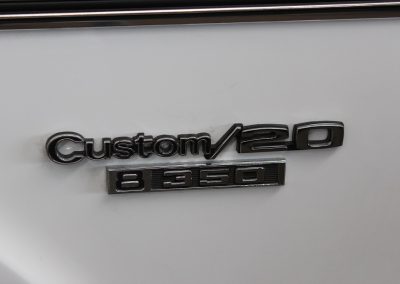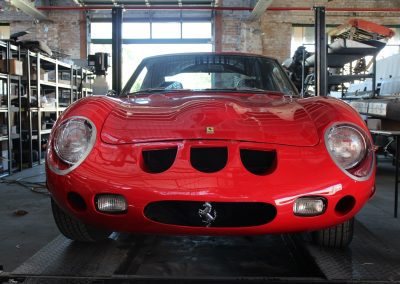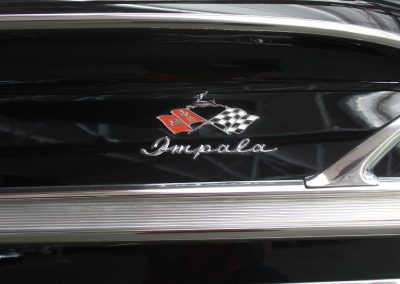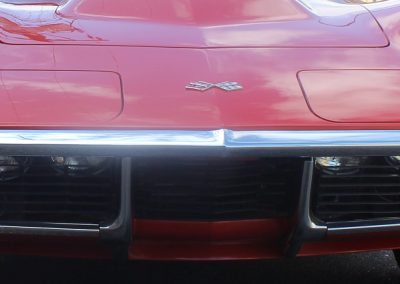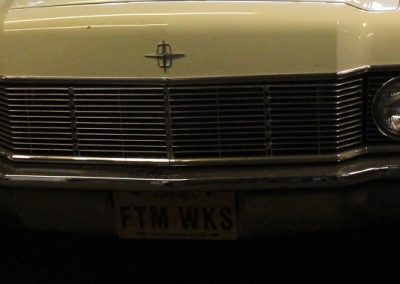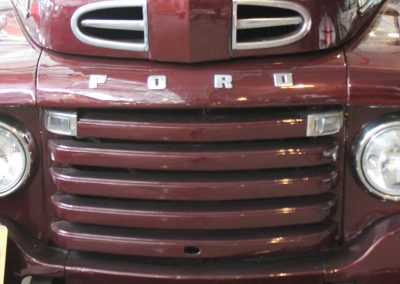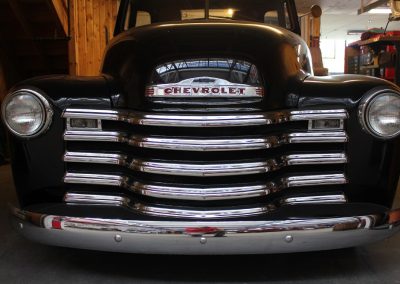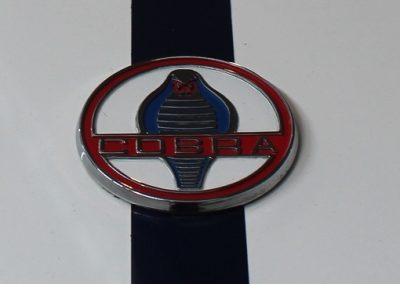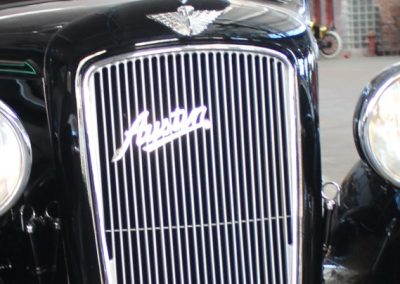1936 Austin 10/4

As seen on Season Six of FantomWorks
Owner Insight:
Explore the Project Galleries
Trim & Detail
Finish
The Austin Ten is a small car that was produced by Austin. It was launched on 19 April 1932 and was Austin’s best-selling car in the 1930s and continued in production, with upgrades, until 1947. It fitted in between their “baby” Austin Seven which had been introduced in 1922 and their various Austin Twelves which had been updated in January 1931.
The design of the car was conservative with a pressed steel body built on a ladder chassis. The chassis was designed to give a low overall height to the car by dipping down by 2.75 inches (70 mm) between the axles. The 1125-cc four-cylinder side-valve engine producing 21 brake horsepower (16 kW) drove the rear wheels through a four-speed gearbox and open drive shaft to a live rear axle. Steering was by worm and wheel. Suspension was by half-elliptic springs all round mounted on silent-bloc bushes and damped by frictional shock absorbers. The four-wheel brakes were cable and rod operated by pedal or by hand lever on the offside of the speed lever. The electrical system was 6 volt. For the first year only, a four-door saloon was made in two versions. The basic model cost £155 and was capable of reaching 55 miles per hour (89 km/h) with an economy of 34 and the Sunshine or De-Luxe with opening roof and leather upholstery at £168. Bumpers were provided. The chassis was priced at £120.
The first styling change came in August 1934 with a change to the radiator when the plated surround or cowl was replaced by one painted in body color and it was given a slight slope. Synchromesh was added to second gear and dual screenwipers, flush-fitting self-cancelling trafficators (worked by the steering) and a foot-operated headlamp dip switch were fitted. The engine controls were simplified by the adoption of automatic ignition, compensated voltage control, and the provision of a “choke” (combined strangler and throttle control). The saloon was given the name Lichfield and got a protruding boot which enclosed the spare wheel. During 1935 the friction dampers were replaced with hydraulic dampers.
A new six light (three windows down each side, with one behind the rear door) Sherborne body style was added in January 1936, the roof line swept to the rear without interruption to provide a flush back, the then fashionable ‘Airline’ style. The new seating was extra deep at the rear, now with armrests and somewhat longer from back to front than on previous models. The new Sherborne with fixed or sliding roof was priced at £10 more than the equivalent Lichfield.
The forward doors opened rearwards which was considered safer, steering was now by worm and sector with an hour-glass worm. The road-tester described the engine in The Times as having “a steady plodding nature'” and advised that its trustworthiness and simplicity made up for any lack of refinement. The weight of this car was quoted as 17 cwt 1,904 lb (864 kg) as compared with the Lichfield’s 15½ cwt, 1,736 lb (787 kg)



